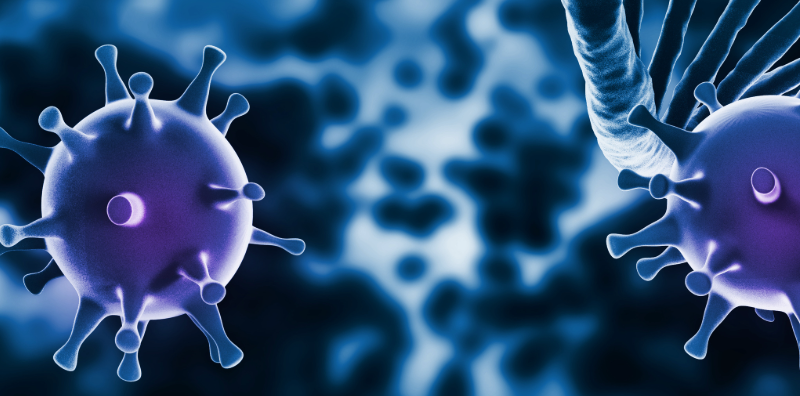To make science reproducible, you must have definitions. The more rigorous the description, the more likely the science behind it can be replicated and valuable in the future. Unfortunately, the term “anti-inflammatory diet” is one of those non-scientific definitions. To define an anti-inflammatory diet, you first need to dive into the background on the source of most of the body’s chronic low-level inflammation.
What Causes Chronic Low-Level Inflammation?
Much of the chronic low-level inflammation that is the underlying cause of many chronic diseases is diet-induced. The reason goes back to evolutionary times in which nutrient storage and the immune system were intimately connected in a single organ described as a “fat body” (1). After millions of years of evolution, this once integrated system is now controlled by separate systems (immune system, intracellular metabolism, and adipose tissue), yet they maintain constant cross-communication. Consequently, inflammation in any one of these systems will create inflammation in the others. The diet is how all three are linked together for better or worse.
The Problem with Excess Calories
Excess calorie intake tends to create inflammation because it creates metabolic stress. The easiest way to determine if you are consuming unnecessary calories is the physical appearance of excess body fat. Regardless of what you might hear, the only way you lose excess body fat is to reduce calorie intake. That’s also the primary way to reduce inflammation. Therefore, any definition of an anti-inflammatory diet must include being defined as a calorie-restricted diet. The molecular reason you must restrict calories is that there is a very intricate relationship between excess fat stores and metabolism mediated by the master regulator of metabolism known as AMP-activated protein kinase (AMPK). Calorie restriction activates AMPK, whereas excess calorie intake inhibits AMPK. The inhibition of AMPK leads to insulin resistance, which is the first step in developing many chronic disease conditions such as diabetes, heart disease, and neurological diseases such as Alzheimer’s. The reason is that AMPK is a complex enzyme that acts as an energy sensor in every cell in the body that regulates metabolism, including immuno-metabolism (the ability of metabolism to control your immune system) and oxidation of stored body fat (2).
How the Diet Inhibits AMPK
Two dietary factors inhibit AMPK activity. The first is excess calories, and the other is excess glucose (3). You develop excess body fat due to consuming excessive amounts of calories, glucose, or both as they are dietary inhibitors of AMPK. If AMPK is inhibited, its ability to control fat oxidation is also inhibited. Therefore, if you have excess body fat, it simply means AMPK is being inhibited in every organ in the body. The result is inflammation increases as AMPK is no longer inhibiting NF-κB, which is the genetic master switch of inflammation in every cell (4,5)
You Need Some Stored Body Fat, But How Much?
At the same time, stored body fat is essential to provide the reserve energy to keep the body functioning. So what’s the right level of body fat? To be considered metabolically fit, the average male should have a body fat percentage between 14 to 17 percent body fat and the average female between 22 and 25 percent body. This definition is vastly different from recommended body mass indexes of less than 25 for both sexes. For example, the average male with a BMI of 25 has 28 percent body and the average female with a BMI of 25 has about 33 percent body fat (6). How can you quickly tell if you have body fat of those percentages? When you can see one of your six abdominal muscles. If you see more than one abdominal muscle, then consider adding more monounsaturated fat to your existing diet to ensure you have adequate levels of stored fat needed for recovery from injuries or to maintain your metabolism.
There’s More to An Anti-Inflammatory Diet Than Simply Reducing Calories
Reducing calories is only the first step of defining an anti-inflammatory diet. You also must have the correct balance of macronutrients to increase satiety, so you aren’t hungry as you reduce total calorie intake. Moreover, an appropriate macronutrient balance is required to maintain stable blood sugar levels for the brain (so you don’t develop hypoglycemia) and increase satiety signals to the brain from the gut, so you aren’t hungry between meals. This increased satiety is essential since it’s only without hunger that it is possible to practice continuous calorie restriction.
What’s the Right Macronutrient Balance?
First, you must have adequate protein at every meal (about 25 grams). That protein level at every meal should be balanced with about 35 grams of absorbable low-glycemic carbohydrates (primary non-starchy vegetables with limited amounts of fruits) rich in fermentable fiber. This combination is necessary to maintain an adequate hormonal balance and maintain stable blood glucose levels. Finally, each meal has a low total fat content (about 12 grams) but primarily monounsaturated fat. Each meal would contain between 400 and 500 calories. This results in a calorie-restricted, protein-adequate, moderate carbohydrate, low-fat diet rich in fiber but without hunger or fatigue (4,5). The common name of such a calorie-restricted anti-inflammatory diet is the Zone diet.
What is the Difference Between the Zone and the Zone Diet?
The Zone is defined as the physiological state in which you consistently maintain the metabolic balance necessary to reduce, resolve, and repair the inflammatory damage caused by diet-induced inflammation (4,5). To reach the Zone, in addition to following the Zone Diet, you need adequate omega-3 fatty acids to make resolvins to reduce inflammatory stress and activate AMPK and sufficient intake of polyphenols to activate AMPK optimally. However, without following the calorie-restricted anti-inflammatory Zone diet to prevent the intake of excess calories and glucose, you will constantly be inhibiting optimal AMPK activity regardless of the levels of omega-3 fatty acids and polyphenols you are consuming. That lack of dietary control will take you out of the Zone and compromise your ability to control chronic low-level inflammation in every organ in your body.

Science Supports the Zone Diet
More than 40 clinical studies published since 1998 have used that definition of a calorie-restricted anti-inflammatory diet and validated the Zone Diet (7–48). They have consistently demonstrated the effectiveness of such a diet, especially in treating type 2 diabetes, a chronic disease characterized by chronic low-level inflammation
The Real Goal of Medicine
The goal of medicine should be to avoid developing any type of chronic disease for as long as possible. The foundation for reaching that goal is following an anti-inflammatory diet for a lifetime. The result is to extend your healthspan, defined as longevity minus years of disability (49). It all starts with your ability to control diet-induced inflammation. Using a highly defined anti-inflammatory diet, like the Zone diet, is a great starting point.
References
- Hotamisligil GS. “Foundations of immunometabolism and implications for metabolic health and disease.” Immunity. 2017 Sep 19;47(3):406-420.
- Canto C and Auwerx J. “Calorie restriction: Is AMPK the key sensor and effector?” Physiology 26: 214-224 (2011)
- Lin SC and Hardie GD. “Sensing glucose as well as cellular energy status.” Cell Metab 27: 299-313 (2018)
- Sears B, Perry M, and Saha AK. “Dietary technologies to optimize healing from injury-induced inflammation.” Antiinflamm Antiallergy Agents Med Chem 20: 123-131 (2021)
- Sears B and Saha AK. “Dietary control of inflammation and resolution.” Frontiers Nutr 8: 709435 (2021)
- Meeuwsen S, Horgan GW, and Elia M. “The relationship between BMI and percent body fat, measured by bioelectrical impedance, in a large adult sample is curvilinear and influenced by age and sex.” Clin Nutr 29: 560-566 (2010)
Markovic TP, Jenkins AB, Campbell LV, Furler SM, Kraegen EW, and Chisholm DJ. “The determinants of glycemic responses to diet restriction and weight loss in obesity and NIDDM.” Diabetes Care 21: 687-694 (1998) - Ludwig DS, Majzoub JA, Al-Zahrani A, Dallal GE, Blanco I, and Roberts SB. “High glycemic index foods, overeating, and obesity.” Pediatrics 103: E26 (1999)
- Agus MS, Swain JF, Larson CL, Eckert EA, and Ludwig DS. “Dietary composition and physiologic adaptations to energy restriction.” Am J Clin Nutr 71: 901-907 (2000)
- Dumesnil JG, Turgeon J, Tremblay A, Poirier P, Gilbert M, Gagnon L, St-Pierre S, Garneau C, Lemieux I, Pascot A, Bergeron J, and Despres JP. “Effect of a low-glycaemic index-low-fat-high protein diet on the atherogenic metabolic risk profile of abdominally obese men.” Br J Nutr 86: 557-568 (2001)
- Parker B, Noakes M, Luscombe N, and Clifton P. “Effect of a high-protein, high–monounsaturated fat weight loss diet on glycemic control and lipid levels in type 2 diabetes” Diabetes Care 25: 425-430 (2002)
- Layman DK, Shiue H, Sather C, Erickson DJ, and Baum J. “Increased dietary protein modifies glucose and insulin homeostasis in adult women during weight loss.” J Nutr 133: 405-410 (2003)
- Layman DK, Boileau RA, Erickson DJ, Painter JE, Shiue H, Sather C, and Christou DD. “A reduced ratio of dietary carbohydrate to protein improves body composition and blood lipid profiles during weight loss in adult women.” J Nutr 133: 411-417 (2003)
- Gannon MC, Nuttall FQ, Saeed A, Jordan K, and Hoover H. “An increase in dietary protein improves the blood glucose response in persons with type 2 diabetes.” Am J Clin Nutr 78: 734-741 (2003)
- Pereira MA, Swain J, Goldfine AB, Rifai N, and Ludwig DS. “Effects of a low-glycemic load diet on resting energy expenditure and heart disease risk factors during weight loss.” JAMA 292: 2482-2490 (2004)
- Johnston CS, Tjonn SL, and Swan PD. “High-protein, low-fat diets are effective for weight loss and favorably alter biomarkers in healthy adults.” J Nutr 134: 586-591 (2004)
- Pittas AG, Das SK, Hajduk CL, Golden J, Saltzman E, Stark PC, Greenberg AS, and Roberts SB. “A low-glycemic load diet facilitates greater weight loss in overweight adults with high insulin secretion but not in overweight adults with low insulin secretion in the CALERIE Trial.” Diabetes Care 28: 2939-2941 (2005)
- Fontani G, Corradeschi F, Felici A, Alfatti F, Bugarini R, Fiaschi AI, Cerretani D, Montorfano G, Rizzo AM, and Berra B. “Blood profiles, body fat and mood state in healthy subjects on different diets supplemented with omega-3 polyunsaturated fatty acids.” Eur J Clin Invest 35: 499-507 (2005)
- Johnston CS, Tjonn SL, Swan PD, White A, Hutchins H, and Sears B. “Ketogenic low-carbohydrate diets have no metabolic advantage over non-ketogenic low-carbohydrate diets.” Am J Clin Nutr 83: 1055-1061 (2006)
- Pittas AG, Roberts SB, Das SK, Gilhooly CH, Saltzman E, Golden J, Stark PC, and Greenberg AS. “The effects of the dietary glycemic load on type 2 diabetes risk factors during weight loss.” Obesity 14: 2200-2209 (2006)
- Gannon MC and Nuttall FQ. “Control of blood glucose in type 2 diabetes without weight loss by modification of diet composition.” Nutr Metab 3:16 (2006)
- Giusti J and Rizzott J. “Interpreting the Joslin Diabetes Center and Joslin Clinic clinical guideline for overweight and obese adults with type 2 diabetes.” Curr Diab Report 6: 405-408 (2006)
- Johnston CS, Tjonn SL, Swan PD, White A, and Sears B. “Low-carbohydrate, high-protein diets that restrict potassium-rich fruits and vegetables promote calciuria.” Osteoporos Int 17:1820-1821 (2006)
- Ebbeling CB, Leidig MM, Feldman HA, Lovesky MM, and Ludwig DS “Effects of a low-glycemic load vs. low-fat diet in obese young adults: a randomized trial.” JAMA 297: 2092-2102 (2007)
- White AM, Johnston CS, Swan PD, Tjonn SL, and Sears B. “Blood ketones are directly related to fatigue and perceived effort during exercise in overweight adults adhering to low-carbohydrate diets for weight loss: a pilot study.” J Am Diet Assoc 107: 1792-1796 (2007)
- Hamdy O. “Diabetes weight management in clinical practice—the Why Wait model,” US Endocrinology 4: 49–54 (2008)
- Hamdy O and Carver C. “The Why WAIT program: Improving clinical outcomes through weight management in type 2 diabetes.” Curr Diab Rep 8: 413-420 (2008)
- Lasker DA, Evans EM, and Layman DK. “Moderate carbohydrate, moderate protein weight loss diet reduces cardiovascular disease risk compared to high carbohydrate, low protein diet in obese adults: A randomized clinical trial.” Nutr Metab 5: 30 (2008)
- Layman DK, Evans EM, Erickson D, Seyler J, Weber J, Bagshaw D, Griel A, Psota T, and Kris-Etherton P. “A moderate-protein diet produces sustained weight loss and long-term changes in body composition and blood lipids in obese adults.” J Nutr 139: 514-521 (2009)
- Jenkins DJ, Wong JM, Kendall CW, Esfahani A, Ng VW, Leong TC, Faulkner DA, Vidgen E, Greaves KA, Paul G, and Singer W. “The effect of a plant-based low-carbohydrate diet on body weight and blood lipid concentrations in hyperlipidemic subjects.” Arch Intern Med 169: 1046-1054 (2009)
- Evangelista LS, Heber D, Li Z, Bowerman S, Hamilton MA, and Fonarow GC. “Reduced body weight and adiposity with a high-protein diet improves functional status, lipid profiles, glycemic control, and quality of life in patients with heart failure: a feasibility study.” J Cardiovasc Nurs 24: 207-215 (2009)
- Pearce KL, Clifton PM, and Noakes M. “Egg consumption as part of an energy-restricted high-protein diet improves blood lipid and blood glucose profiles in individuals with type 2 diabetes.” Br J Nutr 105: 584-592 (2011)
- Kitabchi AE, McDaniel KA, Wan JY, Tylavsky FA, Jacovino CA, Sands CW, Nyenwe EA, and Stentz FB. “Effects of high-protein versus high-carbohydrate diets on markers of β-cell function, oxidative stress, lipid peroxidation, proinflammatory cytokines, and adipokines in obese, premenopausal women without diabetes: A randomized controlled trial.” Diabetes Care 36: 1919-1925 (2013)
- Mamerow MM, Mettler JA, English KL, Casperson SL, Arentson-Lantz E, Sheffield-Moore M, Layman DK, and Paddon-Jones D. “Dietary protein distribution positively influences 24-h muscle protein synthesis in healthy adults.” J Nutr 144: 876-880 (2014)
- Moosheer SM, Waldschütz W, Itariu BK, Brath H, and Stulnig TM. “A protein-enriched low glycemic index diet with omega-3 polyunsaturated fatty acid supplementation exerts beneficial effects on metabolic control in type 2 diabetes.” Prim Care Diabetes. 8: 308-314 (2014)
- Mottalib A, Sakr M, Shehabeldin M, and Hamdy O. “Diabetes remission after nonsurgical intensive lifestyle intervention in obese patients with type 2 diabetes.” J Diabetes Res 2015: 468704 (2015)
- Stulnig TM. “The Zone diet and metabolic control in type 2 diabetes.” J Am Coll Nutr 34 Suppl 1: 39-41 (2015)
- Stentz FB, Brewer A, Wan J, Garber C, Daniels B, Sands C, and Kitabchi AE. “Remission of pre-diabetes to normal glucose tolerance in obese adults with high protein versus high carbohydrate diet.” BMJ Open Diabetes Res Care 4: e000258 (2016)
- Markova M, Pivovarova O, Hornemann S, Sucher S, Frahnow T, Wegner K, Machann J, Petzke KJ, Hierholzer J, Lichtinghagen R, Herder C, Carstensen-Kirberg M, Roden M, Rudovich N, Klaus S, Thomann R, Schneeweiss R, Rohn S, and Pfeiffer AF. “Isocaloric diets high in animal or plant protein reduce liver fat and inflammation in individuals with type 2 diabetes.” Gastroenterology 152: 571-585 (2017)
- Hamdy O, Mottalib A, Morsi A, El-Sayed N, Goebel-Fabbri A, Arathuzik G, Shahar J, Kirpitch A, and Zrebiec J. “Long-term effect of intensive lifestyle intervention on cardiovascular risk factors in patients with diabetes in real-world clinical practice: A 5-year longitudinal study.” BMJ Open Diabetes Res Care 5:e000259 (2017)
- Liu K, Wang B, Zhou R, Lang HD, Ran L, Wang J, Li L, Kang C, Zhu XH, Zhang QY, Zhu JD, Doucette S, Kang JX, and Mi MT. “Effect of combined use of a low-carbohydrate, high-protein diet with omega-3 polyunsaturated fatty acid supplementation on glycemic control in newly diagnosed type 2 diabetes: a randomized, double-blind, parallel-controlled trial.” Am J Clin Nutr 108: 256-265 (2018)
- Mateo-Gallego R, Marco-Benedí V, Perez-Calahorra S, Bea AM, Baila-Rueda L, Lamiquiz-Moneo I, de Castro-Orós I, Cenarro A, and Civeira F. “Energy-restricted, high-protein diets more effectively impact cardiometabolic profile in overweight and obese women than lower-protein diets.” Clin Nutr 36: 371-379 (2017)
- Samkani A, Skytte MJ, Kandel D, Kjaer S, Astrup A, Deacon CF, Holst JJ, Madsbad S, Rehfeld JF, Haugaard SB, and Krarup T. “A carbohydrate-reduced high-protein diet acutely decreases postprandial and diurnal glucose excursions in type 2 diabetes patients.” Br J Nutr 119: 910-917 (2018)
- Skytte MJ, Samkani A, Petersen AD, Thomsen MN, Astrup A, Chabanova E, Frystyk J, Holst JJ, Thomsen HS, Madsbad S, Larsen TM, Haugaard SB, and Krarup T. “A carbohydrate-reduced high-protein diet improves HbA1c and liver fat content in weight stable participants with type 2 diabetes: A randomised controlled trial.” Diabetologia 62:2066-2078 (2019)
- Xu C, Markova M, Seebeck N, Loft A, Hornemann S, Gantert T, Kabisch S, Herz K, Loske J, Ost M, Coleman V, Klauschen F, Rosenthal A, Lange V, Machann J, Klaus S, Grune T, Herzig S, Pivovarova-Ramich O, and Pfeiffer AFH. “High-protein diet more effectively reduces hepatic fat than low-protein diet despite lower autophagy and FGF21 levels.” Liver Int 40:2982-2997 (2020)
- Coussa A, Bassil M, Gougeon R, Marliss EB, and Morais JA. “Glucose and protein metabolic responses to an energy-but not protein-restricted diet in type 2 diabetes.” Diabetes Obes Metab 22: 1278-1285 (2020)
- Stentz FB, Mikhael A, Kineish O, Christman J, Sands C. “High protein diet leads to prediabetes remission and positive changes in incretins and cardiovascular risk factors.” Nutr Metab Cardiovasc Dis 31: 1227-1237 (2021)
- Evangelista LS, Jose MM, Sallam H, Serag H, Golovko G, Khanipov K, Hamilton MA, and Fonarow GC. “High-protein vs. standard-protein diets in overweight and obese patients with heart failure and diabetes mellitus: Findings of the Pro-HEART trial.” ESC Heart Fail 8: 1342-1348 (2021)
- Crimmins EM. Lifespan and healthspan: Past, present, and promise. Gerontologist 55: 901-911 (2015)





